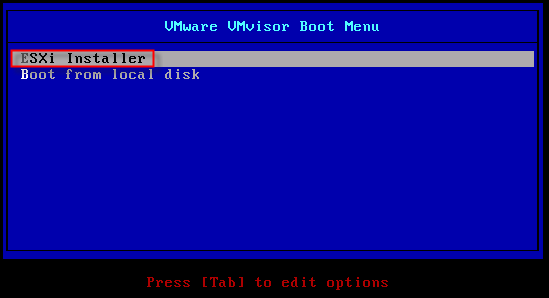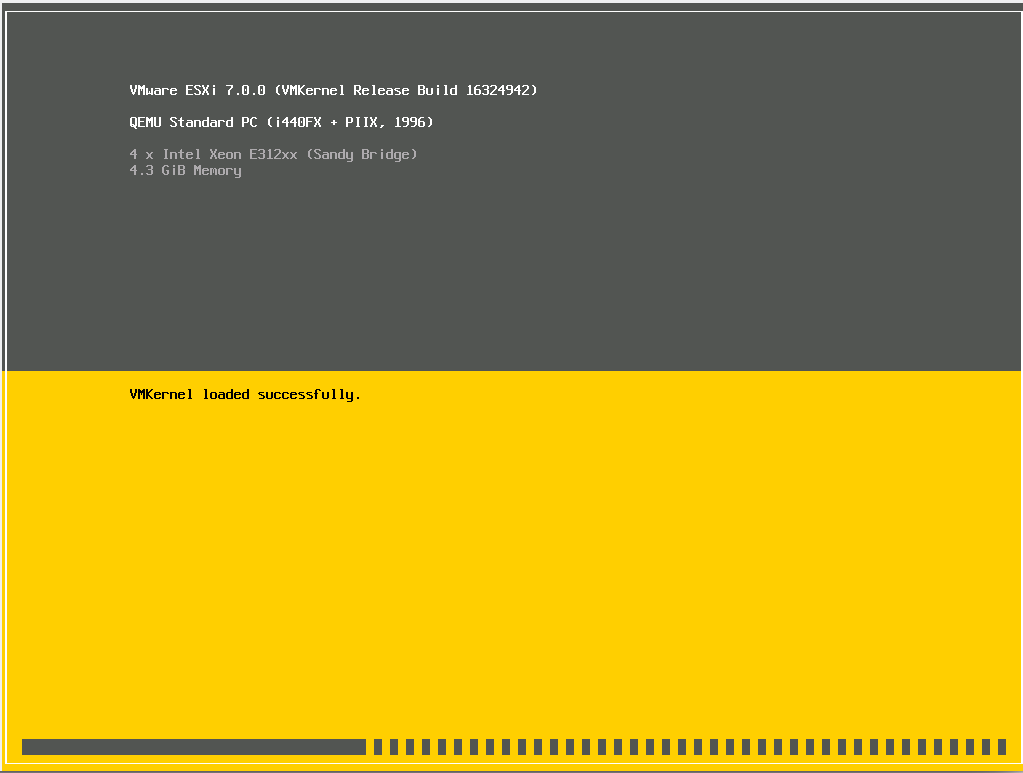I downloaded VMware-VMvisor-Installer-7.0.0-15843807.x8664.iso (vSphere 7.0 build 15843807). I will install vSphere into a virtual machine (don’t do this in production, this is a configuration unsupported by VMware, but often seen in home labs), so I will just mount the iso file into the CD drive and power on the VM. Install VMware vSphere 7.0. Write (Burn) the VMware-VMvisor-Installer-7.0.0-15843807.x8664.iso downloaded in Step 1, to a blank CDROM, using your favourite CD writing software. We use ISO Recorder. If you are using remote server utilities, e.g. HP iLo or Dell iDRAC, you can attach the virtual CDROM drive in the server to the VMware-VMvisor-Installer-7.0.0-15843807.x86. Download VMware vSphere. Run fewer servers and reduce capital and operating costs using VMware vSphere to build a cloud computing infrastructure.
Just want the easy upgrade (rather than download ISO) methods for vSphere 6.5 Update 1, also known as 6.5U1 or 6.5 U1? No problem, jump on over to:
Right now I only want to go from 5.0 to 5.5. The thing is, when I go to the 5.5 download page and try to get the 5.5 iso installer via the link, what i actually get is a file called Vmware-VMvisor-Installer-6.7-0.update01. This implied to me either the download was wrong, or that the installer. Name: VMware-VMvisor-Installer-6.5.0.update.x8664.iso Release Date: 2017-07-27 Build Number: 5969303. Let's roll up our sleeves and have a look at all the great new vSphere features and fixes: What's inside VMware vSphere 6.5 Update 1 Jul 28 2017 by Florian Grehl at Virten.net.
- How to easily update your VMware Hypervisor from 6.5.x to 6.5 Update 1 (ESXi 6.5 U1).
Today's big vSphere 6.5 Update release is a big deal in that many customers choose to wait for these Update 1 versions of any major vSphere version before upgrading their enterprise. Yes, to mee, it seemed that vSphere 6.5 was such a major change from 6.0 that it could have just as well been called 7.0. That nitpicking aside, the wait-for-N+1 customers and risk-averse home-labbers is over. Start your downloads, but be sure to read this entire article before you begin installing!
Download
For new installs, or upgrade-from-bootable-ISO installs
Download 1
- VMware vCenter Server Appliance
Release Notes and Download PageFile size: 3.443 GB
File type: iso
Name: VMware-VCSA-all-6.5.0-5973321.iso
Release Date: 2017-07-27
Build Number: 5973321

Download 2
- VMware vSphere Hypervisor (ESXi ISO) image (Includes VMware Tools)
Release Notes and Download PageFile size: 332.63 MB
File type: iso
Name: VMware-VMvisor-Installer-6.5.0.update01-5969303.x86_64.iso
Release Date: 2017-07-27
Build Number: 5969303
Overview
Let's roll up our sleeves and have a look at all the great new vSphere features and fixes:
- What's inside VMware vSphere 6.5 Update 1
Jul 28 2017 by Florian Grehl at Virten.net
For those of you into vSAN, there's considerable refinement that moving from vSAN 6.6 to vSAN 6.6.1 will bring.
VMware vSAN 6.6.1 Release Notes

VMware vSAN 6.6.1 | 27 July 2017 | ISO Build 5969303
Check for additions and updates to these release notes.
Vmware Vmvisor Installer Iso
There are many fixes, and a few new features. This article helps remind folks that the vSAN bits are baked right into the Hypervisor, so there is no separate download for vSAN 6.6.1, it's right in vSphere 6.5 U1! Also, anybody can now upgrade from vSphere 6.0 U3 to vSphere 6.6.1 / vSphere 6.5 U1,.
Don't miss the VUM Integration video featured in the video gallery below.
VMware's Announcements
From earlier today:
added Jul 28 2017, another closely related post
Don't forget to check out the deeply technical overview by Jeff Hunter and others over at StorageHub.
Vmware-vmvisor-installer-6.7.0 Iso

If you are already at vCenter/VCSA 6.5.x and ESXi 6.5.x, then you can get vSAN bits today by simply installing or upgrading to vCenter/VCSA 6.5 U1 and ESXi 6.5 U1. Details appear (soon) for both new installs and upgrade.
vSphere 6.5 Update 1 Prerequisites
- read VMware's vSphere Upgrade guide
- You will also need to do your homework before any major upgrade, even in a home lab. While all that goes into such efforts is well beyond the scope of this article, a great place to get started appears here:
- My vSphere 6.5 Upgrade Checklist – painful
Jan 29 2017 by Michael White at Notes from MWhite
- My vSphere 6.5 Upgrade Checklist – painful
vSAN Prerequisites
- You will need the right hardware for the best experience, especially if you're expecting resilience and performance. Not just on the VCG (VMware Compatibility Guide) aka HCL, but also on the VMware Compatibility Guide for vSAN, featuring a caching layer made from SSDs of the proper write endurance paired with PLP/Supercapacitors, typically found in enterprise (costlier) flash storage devices
- You will need a vSAN license key
- Licensing was discussed recently here, with VMware EVALExperience
~being by far the most affordable way to dip your toes into to a 6 node hybrid vSAN (unconfirmed, but the license key should cover 6), albeit a bit behind on version. I'm hoping for updates to that program soon, stay tuned.~
This has been [mostly] Fixed! That huge update story broke right here at TinkerTry first:- VMUG Advantage just added the latest NSX 6.3.1 and All Flash vSAN 6.6 bits to EVALExperience, great for vSphere home labs, just $180 a year!
May 01 2017
- VMUG Advantage just added the latest NSX 6.3.1 and All Flash vSAN 6.6 bits to EVALExperience, great for vSphere home labs, just $180 a year!
It shouldn't be too long before the EVALExperience downloads links are updated to 6.5 U1. Keep in mind that you can always upgrade your 6.5.x version quite easily, seen below.
VCSA baby! (NOT vCenter)
My focus and yours should be on VCSA going forward, not the old school vCenter installed on Windows. That is why TinkerTry how-to guides generally don't include vCenter on Windows. I'm all in with HMTL5 UIs, and enjoy the ease-of-install, ease-of-update, and speed of this Photon OS-based appliance. See for yourself in the update videos.
Easy Upgrade
Here's the exact way that I got these two upgrades done safely and easily, with a focus on simplicity for smaller home labs, download and install is done with one command, which I tested using the latest BIOS and IPMI on Xeon D:
What are you still reading this for? Roll up your sleeves, backup your VCSA and ESX, and get upgrading! Then come back and let us know how it went by dropping comments below the articles.

Video
You can customize the standard ESXi installer ISO image with your own installation or upgrade script. This customization enables you to perform a scripted, unattended installation or upgrade when you boot the resulting installer ISO image.
See also About Installation and Upgrade Scripts and About the boot.cfg File.
- Linux machine
- The ESXi ISO image VMware-VMvisor-Installer-6.x.x-XXXXXX.x86_64.iso,where 6.x.x is the version of ESXi you are installing, and XXXXXX is the build number of the installer ISO image
- Your custom installation or upgrade script, the ks_cust.cfg kickstart file
Procedure
- Download the ESXi ISO image from the VMware Web site.
- Mount the ISO image in a folder: mount -o loop VMware-VMvisor-Installer-6.x.x-XXXXXX.x86_64.iso /esxi_cdrom_mount
XXXXXX is the ESXi build number for the version that you are installing or upgrading to.
- Copy the contents of cdrom to another folder:
- Copy the kickstart file to /esxi_cdrom. cp ks_cust.cfg /esxi_cdrom
- (Optional) Modify the boot.cfg file to specify the location of the installation or upgrade script by using the kernelopt option. You must use uppercase characters to provide the path of the script, for example,For UEFI boot, you must modify the boot.cfg file located in /efi/boot/.The installation or upgrade becomes completely automatic, without the need to specify the kickstart file during the installation or upgrade.
- Recreate the ISO image using the mkisofs or the genisoimage command. Command
Syntax mkisofs mkisofs -relaxed-filenames -J -R -o custom_esxi.iso -b isolinux.bin -c boot.cat -no-emul-boot -boot-load-size 4 -boot-info-table -eltorito-alt-boot -eltorito-platform efi -b efiboot.img -no-emul-boot /esxi_cdrom genisoimage genisoimage -relaxed-filenames -J -R -o custom_esxi.iso -b isolinux.bin -c boot.cat -no-emul-boot -boot-load-size 4 -boot-info-table -eltorito-alt-boot -e efiboot.img -no-emul-boot /esxi_cdrom You can use this ISO image for regular boot or UEFI secure boot.
The ISO image includes your custom installation or upgrade script.
What to do next
Install ESXi from the ISO image.
